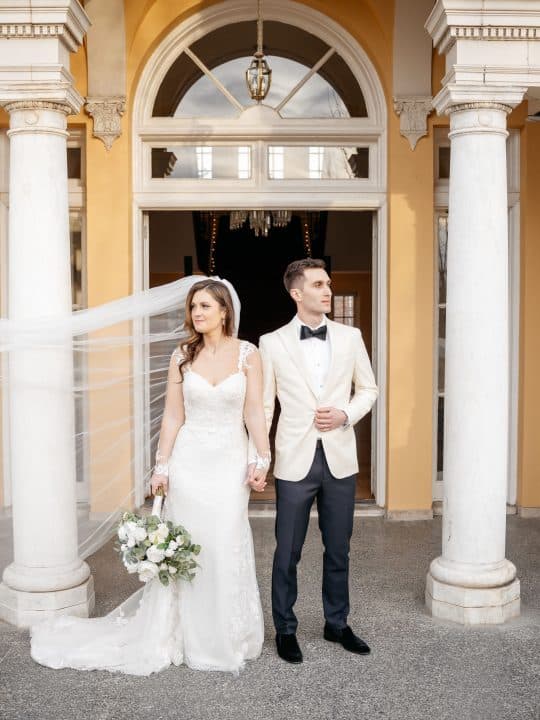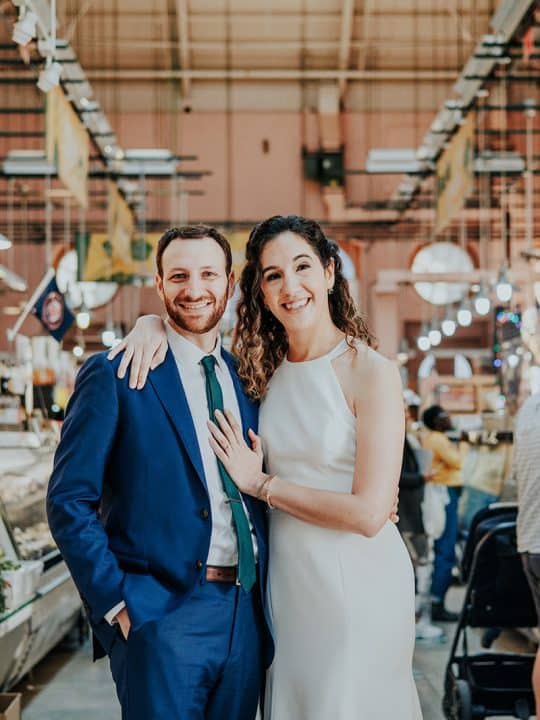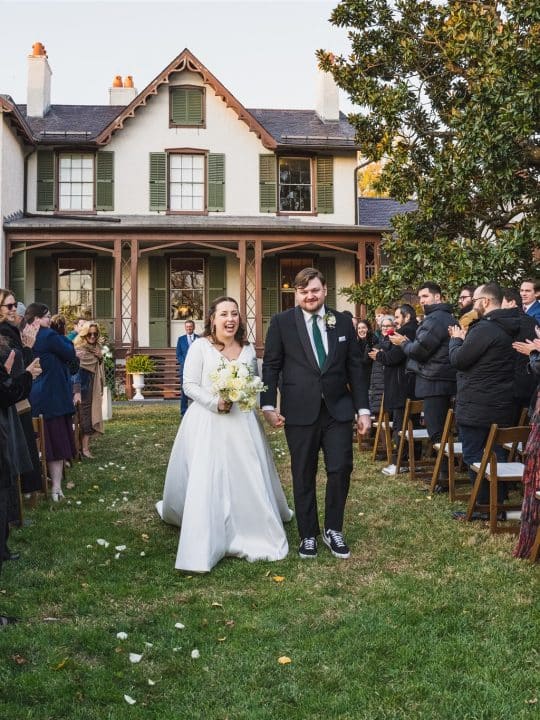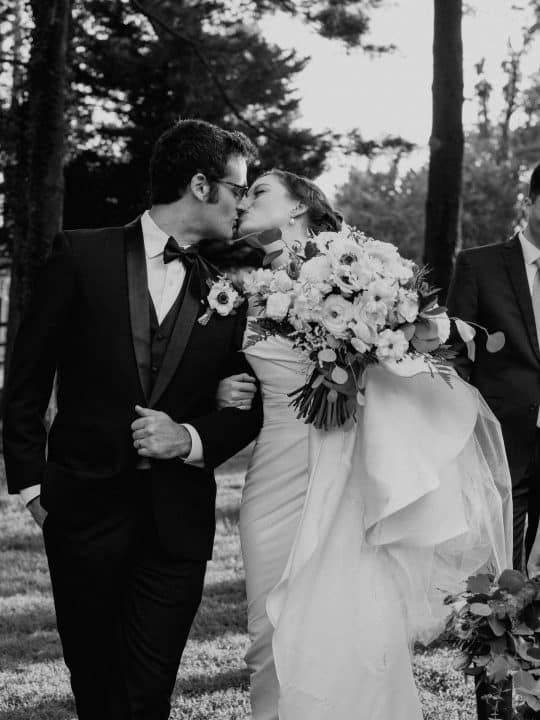
Images: Jonna Michelle Photography
One of the things I’ve really loved about this business is the other small business owners it has opened me up to be able to meet. Amina is one of those small business owners and she owns an incredible natural soy candle & beauty goods shop. Amina also got married fairly recently and I DROOLED over her wedding images (totally hoping she would submit them here). She admitted to me recently that initially she wasn’t into making her wedding day so public (totally respect that – even as someone who’s life is all over the internets) but lately some of my personal posts (even the non-wedding related ones) made her think otherwise. Her wedding planning journey was far from easy and she thought hey, why not share it with others in case it helps other people who are in the same boat.
And boy was I so happy she did. So for today we have a long but totally worthwhile read from Amina – a bride that struggled with the wedding machine and what that meant for her TRULY multicultural life, relationship, & family. You guys are going to LOVE this post whether you are dealing with these things or not. Enjoy.

For most of us, a wedding is the biggest event we ever plan in our lives. It simultaneously displays to the world our relationships, religious affiliations, family drama, personal tastes and much more that I’m definitely overlooking. My husband and I agree that planning a wedding is probably the worst way to start a new life together. You make huge decisions that come with enormous price tags, and have to reconcile differences in taste, style and worldview. Money, religion and family politics all come to a head in planning this event, along with the pressure of ensuring it is the happiest day of your life. No biggie.
Brad and I first met twelve years ago in high school. We will have been together for ten years this November. He’s like my right arm, and I couldn’t imagine life without him whispering witty jokes in my ear filled with pop culture references about all the people in line in front of us wherever we go. That being said, we come from nearly polar-opposite backgrounds. Planning our wedding was tough because nothing about us has ever been traditional, and reconciling the cultural mileu surrounding our tiny love bubble forced us to ask ourselves a lot of questions about who we were as people.


My mom is Pakistani-American and my dad is African-American, and an Islamic convert. My siblings and I were raised Muslim. Brad’s family is white, hailing from the mountains of West Virginia and had a totally non-religious upbringing. When planning our wedding, we had to answer SO many questions that are a given for a lot of people. Here are an example of just a few of them –
- What kind of ceremony will we have? Will there be prayer at our wedding?
- Who will marry us?
- What color dress will I wear? Will I wear a Pakistani outfit or a white American wedding dress?
- How many days of events should we have?
- Who is walking in with who?
- Do we have to do all the dancing and awkward American wedding games?
- Will we serve alcohol?
- What kind of food will we serve?
- Kids, no kids? Will everyone hate us for not inviting their kids?
- Am I abandoning my culture by not incorporating everything?????
For me, some of these were big, existential questions that really cut to the core of who I perceive myself to be as a biracial, Muslim-raised American who is, a lot of the time, seen as an outsider by people. I had a lot of deep conflict about having an American-style wedding ceremony, even though I’m not religious in any sense. It felt as though I was abandoning the values and traditions I was raised with, even though it didn’t 100% apply to my current life, in favor of a culture and traditions that doesn’t always make me feel welcome.
For Brad, we needed to make sure his family felt included and didn’t feel out of place. A wedding without alcohol would be weird, and he’s not big on pretending to be someone he’s not. Doing things for appearances’ sake is not in his bag of tricks. We both drink. It’s not a secret, though it’s not openly discussed in my family.


Instead of picking one kind of wedding, we settled on a fusion wedding, making up the rules as we went along. I was obsessed with wedding blogs for inspiration and finding examples of multicultural weddings was rare. A lot of the time, the “multicultural” weddings that I did see were more along the lines of my parents’ wedding back in the 80s: the couple getting married were of different backgrounds, but the entire wedding was in one culture’s traditions and style. We didn’t want to do that. We really wanted everything to feel very BRAMINA [#BRAMINA4Ever] and inclusive and welcoming to all the different people who were coming to celebrate with us. And now, after our wedding, that’s exactly what people tell us they liked most about it.


Planning Our Cultural Mash-Up of a Wedding
It’s difficult to explain the array of options we had for everything, picking from so many different elements of Pakistani and American weddings, but I’ll do my best to explain.
Pakistani/Muslim weddings are traditionally a three-day affair with 300+ people in attendance. The Mehndi, the first day, is the official acceptance of the marriage offer. The bride wears yellow, little to no makeup, has her hands and feet henna’ed and gets skin treatments and other beauty rituals done. It’s traditionally a for-ladies-only affair and everyone gets henna.
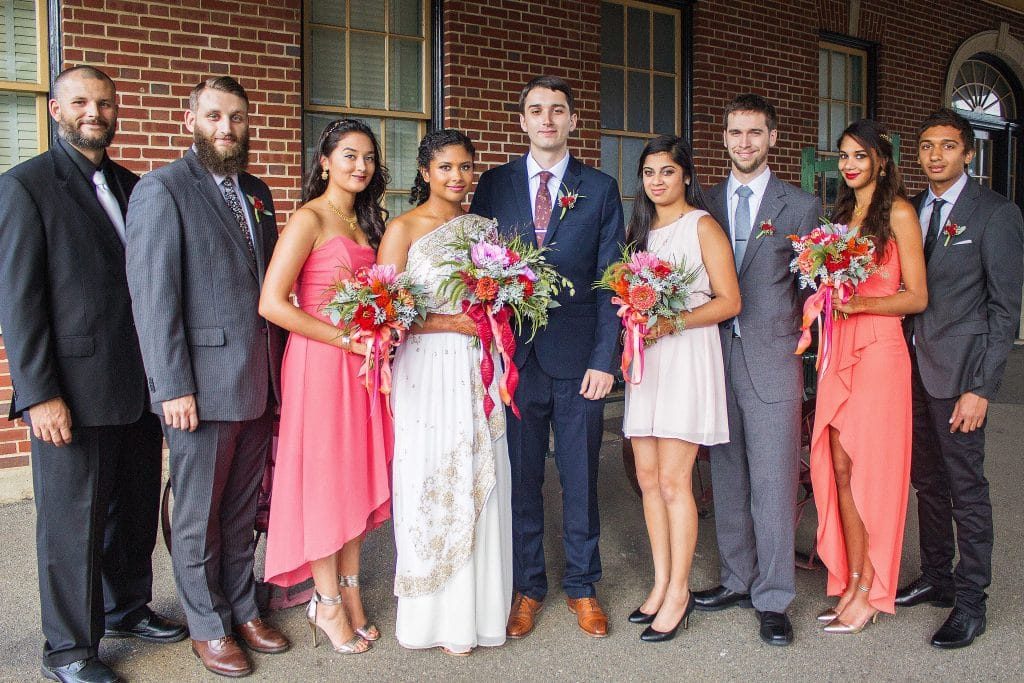
The second day is traditionally the wedding ceremony with food, dancing and choreographed dance performances. The bride wears red and goes all out with jewelry for days – it’s supposed to be a big contrast from the Mehndi, beauty-wise. I’ve seen the groom wear white a lot, but it might not be official tradition. (In my epically culturally-confused life, there may or may not be a video of my sister, cousins and myself around age 8 performing a choreographed dance to an N’Sync song at someone’s wedding. I have not seen the video, but I am told that it definitely exists.)
The third day is the one that my non-traditional mom says is basically the celebration of the consummation of the marriage. It’s usually just a nice sit-down dinner (with 150+ people), where the dress is toned down – colorful, but not as loud as the wedding day. The groom usually wears a dark color.
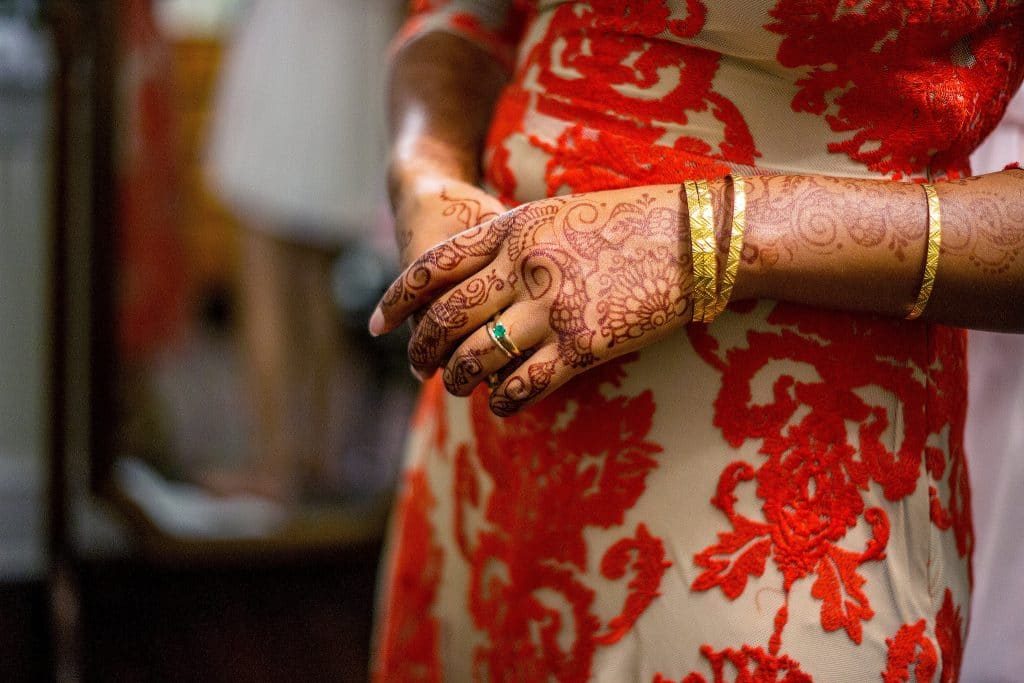
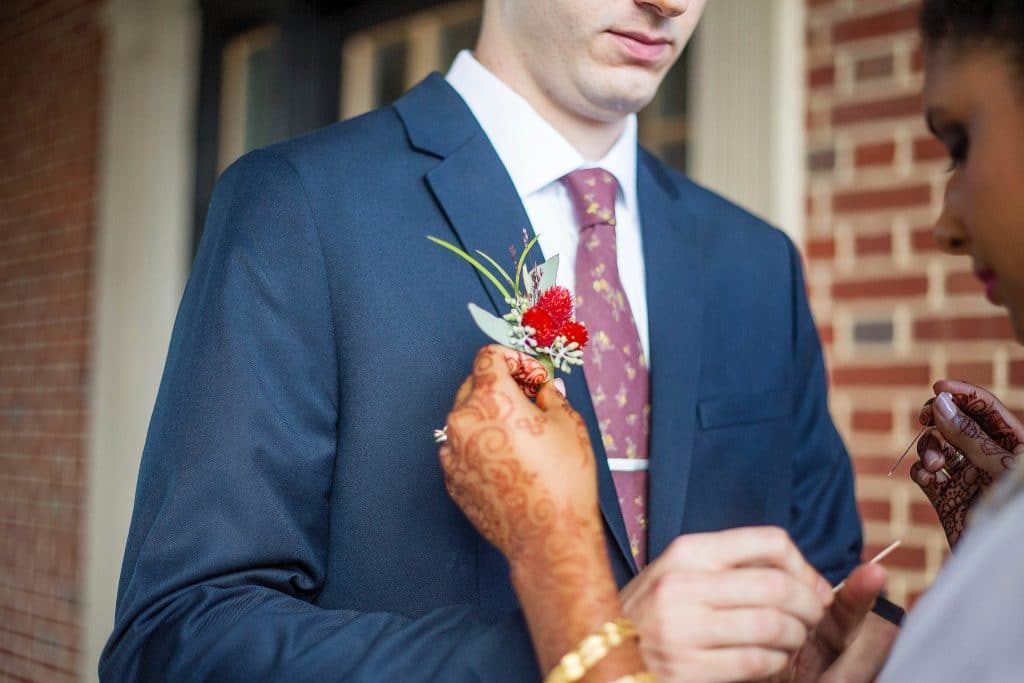
If you ask someone else about Muslim/Pakistani weddings, you might get different explanations – this is just what I know and the information from which we interpreted and planned our wedding.
As you can tell, if you’re (as I’m assuming) familiar with American weddings – Pakistani weddings are SUPER different. Growing up, we never even went to American weddings so all my wedding dreams as a child [eye roll] were steeped in that tradition. I was 18 before I had my first Summer attending American weddings, and that year I went to a few in Brad’s family, including his brother’s, which were a completely different world from what I was used to. I’d seen American weddings on TV, but experiencing one in real life was different.

In the end, we picked and chose exactly what we wanted. We didn’t incorporate a single thing that didn’t feel right to us, and we were lucky to have family that was all on board. Alcohol was served, we hosted under 60 people, and we settled on two days of events plus a brunch the morning after the wedding.
We had a small, casual Mehndi, played the traditional game where the groom gets his shoe stolen by the bride’s family and has to buy it back. It can go upwards of hundreds of dollars, but Brad was mercifully allowed to buy his shoe back for just $35. We invited close family and friends, served Pakistani food and I wore a simple red floral dress from Free People. The decor was a fusion of the traditional Pakistani seating area along with DIY garlands, rope lights, and paper lanterns. We had a henna artist come, and we mixed a couple of punch bowl cocktails, of which Brad was in charge. My maternal grandmother used to throw a lot of Mehndis in her day, and since she passed away long before our turn, my grandfather was happy to pay for all the food as his wedding gift to us, and my uncle hosted at his house in Mount Rainier.
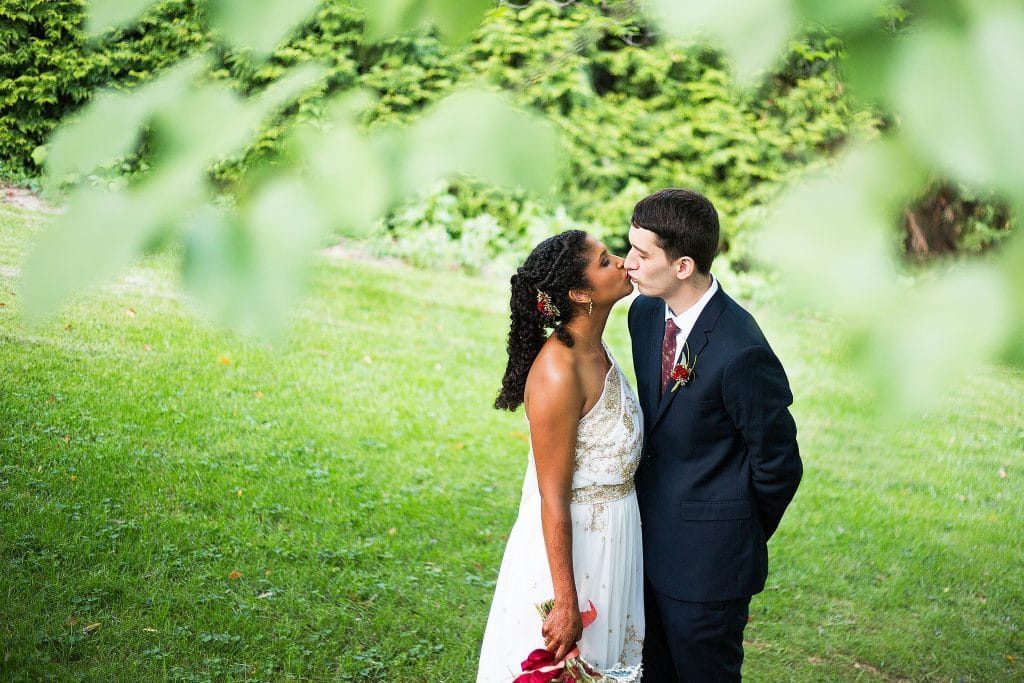
Our actual wedding day was more American-styled and held at a local restaurant. The ceremony was short and sweet, cutting out any and all religious references. Brad wrote it himself, compiling bits and pieces of his own writing with ceremonies from the Internet, and his oldest brother, respectfully ordained online, married us. Our siblings, cousins and close friends stood with us and we were each walked in by both of our parents, something I stole from a personal hero of mine who is the world’s number one warrior against misogyny. I wore a white dress that was a sari cut apart and reimagined into a sewn dress. Katie Stack of Stitch and Rivet spent three days in the Summer of 2014 showing me how to break beads and sew these six yards of fabric into the dress of my dreams, a fitting representation of all the crossed lines and broken rules sewn together into something totally new.
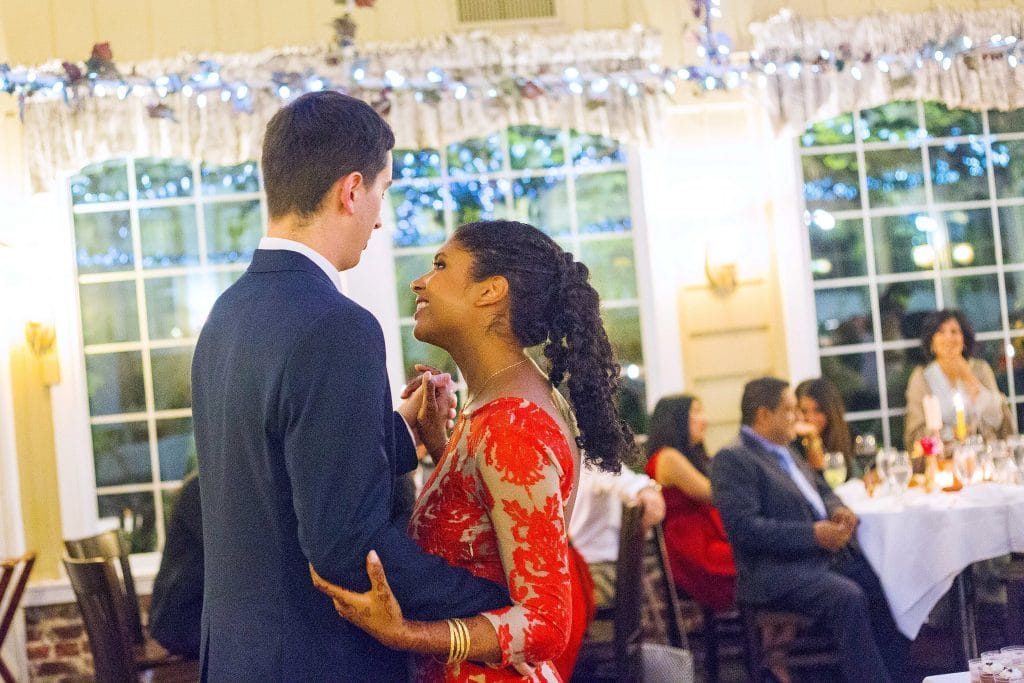
Our garden wedding and reception was decked out in hundreds of paper flowers, fueled by sangria, and choreographed by critically-acclaimed Spotify DJ, Brad Cranford. It all came together in a big colorful flash. I changed into a second dress, traditionally red, but untraditionally backless, to avoid the inevitable sangria spillage that comes with my aggressive dance moves and we got to spend the best evening of all time with all our favorite people in the world.

And to answer all those questions left hanging – we were married without children in attendance, any reception games (no bouquet toss, no garter removal, no dollar dance), and with as many local wedding vendors from our little hippie dippie bubble of a world – Takoma Park and Silver Spring – that we could have.
We had so many helping hands that delivered speakers, helped assemble paper flowers, put together random bouquets the day of, coordinated the day, brought us food, kept us company, tracked down jewelry and helped care for our dog. I kept my last name and Brad kept his. But our mischievous little dog Rosie carries the last name of the person who is not currently yelling at her.
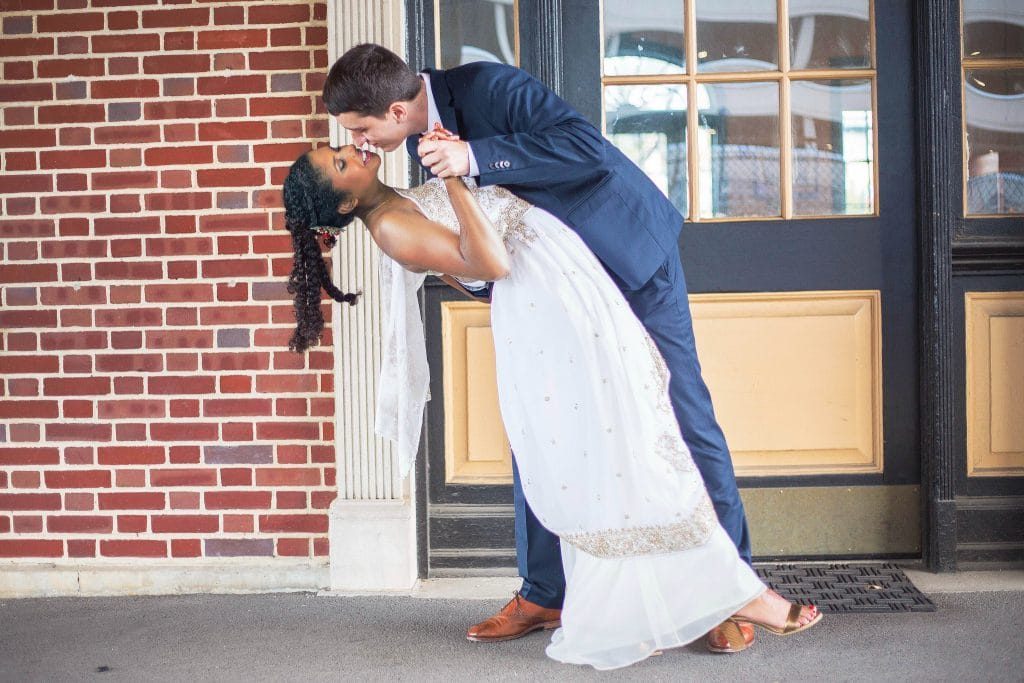
All in all, was it the best day of my life? Of course! Would I do it again? Never. Why? Because after all that contemplation, theorizing, emotional tear-fests, existential crises, reconciling, compromising and paper flower assembling, it doesn’t matter. I have a theory that I could have worn a green shift dress and we could have gotten married at a coffee shop and it wouldn’t change our relationship today. Two years into marriage, we have a pact: when we divorce and remarry each other for the second time in 2064, we’re definitely going to Vegas.
Vendors –> Photographer: Jonna Michelle Photography | Dresses: Custom from Stitch and Rivet, but she’ll never do bridal again; Free People Mehndi and reception dresses | Shoes: Zara & Target | Vintage Clutch: Polly Sue’s Vintage | Jewelry: Bride’s Mother’s | Groom’s Clothing: H&M suit, The Tie Bar tie, Allen Edmonds shoes | Groomsmen Ties: Bull and Moose | Bridesmaid Dresses: BCBG, Mango, Francesca’s | Flowers: Mimoza Design (bouquets, boutonnieres) & Suttler Post Farm (head table flowers) | Venue: Mrs. K’s Tollhouse | Favors: Honey from Banner Bee Company | Cake: Cheesecake from Capital City Cheesecake | DIY’d to the Max: Paper flowers, invitations, centerpieces, escort cards




